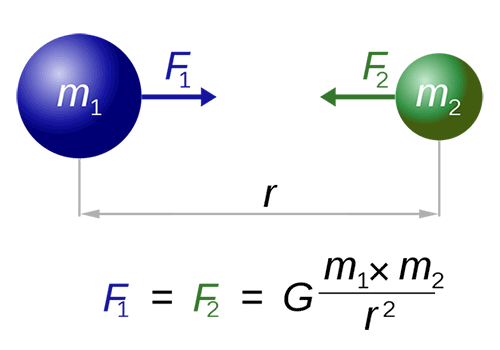Isaac newton developed the theory of universal gravitation as well as his famous three laws of motion forever leaving his mark on physics astronomy and mathematics

Isaac Newton: The Genius Behind Universal Gravitation and the Laws of Motion

Isaac Newton, a renowned scientist, mathematician, and astronomer, made groundbreaking contributions to the fields of physics, astronomy, and mathematics. His remarkable achievements include the development of the theory of universal gravitation and the formulation of his famous three laws of motion. Newton’s work has not only shaped these branches of science but has also left an indelible mark on our understanding of the universe as a whole.
The Theory of Universal Gravitation

Isaac Newton’s theory of universal gravitation revolutionized the way we perceive gravity. Before Newton, there were various theories attempting to explain the force that pulls objects towards each other. However, Newton’s theory provided a comprehensive explanation that described the motion of celestial bodies, such as planets and moons, as well as everyday objects on Earth.
In his theory, Newton postulated that every particle of matter in the universe attracts every other particle with a force that is directly proportional to the product of their masses and inversely proportional to the square of the distance between them. This profound insight paved the way for a deeper understanding of the force that governs the motions of celestial objects and even objects on Earth.
Newton’s Three Laws of Motion
Isaac Newton’s laws of motion are fundamental principles that describe how objects interact with forces and move in response to those forces. These laws laid the foundation for classical mechanics and continue to be the basis of our understanding of motion to this day.
1. Newton’s First Law of Motion - The Law of Inertia
Newton’s first law states that an object at rest will remain at rest, and an object in motion will continue moving in a straight line at a constant velocity unless acted upon by an external force. This concept is often summarized as the law of inertia.
2. Newton’s Second Law of Motion - The Law of Acceleration
According to Newton’s second law, the force acting on an object is equal to the mass of the object multiplied by the acceleration it undergoes. Mathematically, this is expressed as F = ma, where F represents force, m represents mass, and a represents acceleration.
3. Newton’s Third Law of Motion - The Law of Action and Reaction
Newton’s third law states that for every action, there is an equal and opposite reaction. This law explains that whenever an object exerts a force on another object, the second object exerts an equal and opposite force on the first. This law is fundamental in understanding the interactions between pairs of objects.
The Impact on Physics, Astronomy, and Mathematics
Newton’s contributions to physics, astronomy, and mathematics have had a profound and enduring impact. His theory of universal gravitation provided a unified understanding of the force that governs the motion of celestial bodies, allowing astronomers to make precise predictions about their movements. This theory also enabled scientists to explain phenomena such as tides, the orbits of planets, and the motion of comets.
Moreover, Newton’s laws of motion provided an essential framework for studying and describing the behavior of objects in motion. They became the basis for predicting the motion of objects on Earth, launching satellites, understanding the physics of space travel, and even designing vehicles and structures.
In the realm of mathematics, Newton’s work laid the groundwork for the development of calculus, a branch of mathematics that deals with rates of change and the accumulation of infinitesimal quantities. Calculus has become an indispensable tool in numerous scientific disciplines, from physics and engineering to economics and biology.
Isaac Newton’s brilliance, curiosity, and groundbreaking discoveries continue to shape our understanding of the physical world. His theory of universal gravitation and his laws of motion remain fundamental principles in physics, astronomy, and mathematics, forever solidifying his place as one of history’s greatest scientific minds.
Sources:
Tags
Share
Related Posts
Quick Links
Legal Stuff

